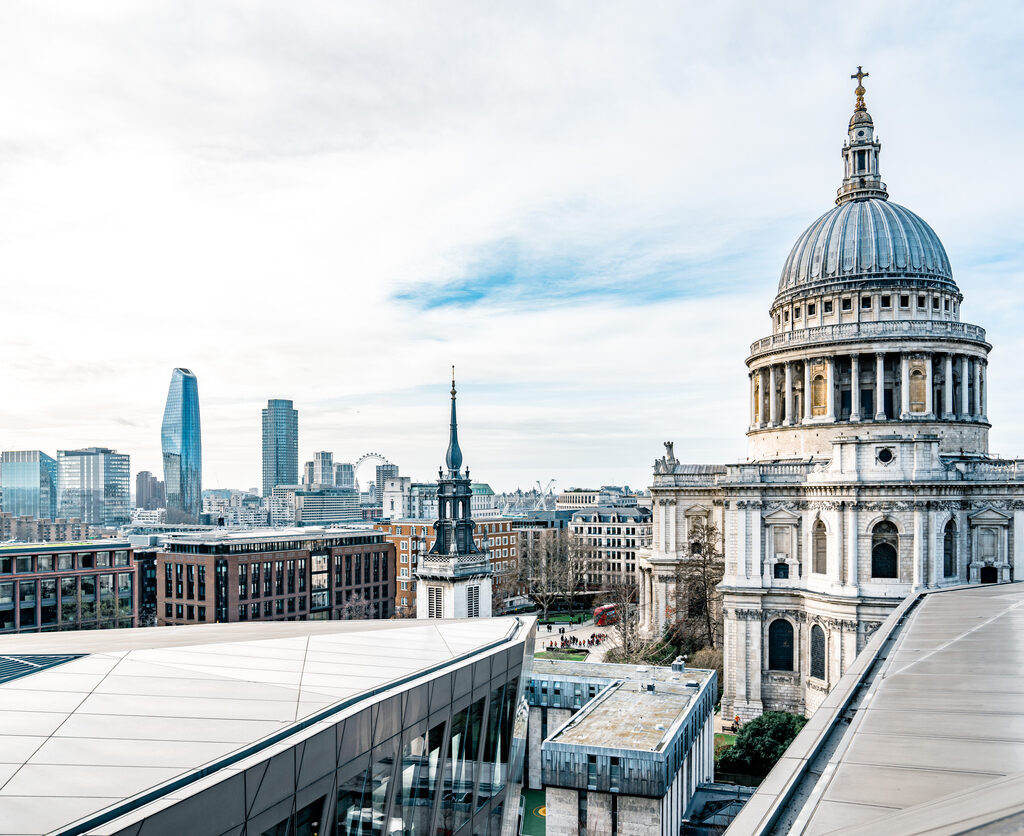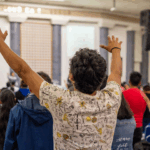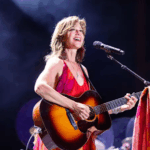Review: In the Shadow of St Paul’s Cathedral, Margaret Willes, Yale University Press

The English churchyard was typically the centre of a village community. This was even more so when it came to St Paul’s Cathedral, which, until the 20th century, was arguably the centre of London. In centuries past, in its yard you could have a coffee with a business partner, see a play, watch an execution, visit a museum, watch acrobats and buy books – many, many books. Oh, and there were religious activities too, for those so inclined.
Margaret Willes has written about bookselling in a previous book (as well as about the Londoners John Evelyn and Samuel Pepys), so it’s no surprise she has plenty of information here about the book trade that grew up around the cathedral. Stationers sold books and the like from ‘stations’, or stalls, set up in the Churchyard (as it was formally known, note the capital ‘C’). In the 16th century the first printing press was set up near Westminster Abbey; it soon moved to Fleet Street near the cathedral, to hook up with the industry already centred around St Paul’s and servicing clergy and lawyers. By the mid-1500s bookshops stretched east of the cathedral, with 32 in the yard itself, some between the buttresses of the cathedral. Because the Churchyard was the centre of the book trade, bibles were printed there, including the KJV. In 1631 a bible was produced by Robert Barker, containing numerous errors including the wording ‘Thou shalt commit adultery’. It was known as the ‘Wicked Bible’.
There were a few churches that were built on the site, and subsequently burned down, since the 600s. An eleventh-century stone building deserved the name ‘cathedral’, its shadow looming over the city, dominating it physically, mentally and spiritually. Before the Great Fire of 1666 the Churchyard was a city within a city, with its own walls. In the 1200s, unsurprisingly, there were monastic buildings; by the 1300s there were schools and a prison, as well as workshops for scribes, stonemasons and bookbinders.
The Churchyard was busy and noisy, with regular processions and festivals. A pulpit was set up in the yard – this is where sermons were heard (as well as news ‘broadcasts’), instead of within the church, all throughout the week. Audiences could reach the thousands, making it a feat for preachers to be heard. The pulpit was covered in a bandstand-type structure that amplified sound. From the pulpit heretics were denounced, including the likes of John Wycliffe who dared to suggest that Scripture should be available in the vernacular.
Ironically, books were also burned in the yard. The types of books burned changed with the coming of the Reformation to England, then changed again under Queen Mary. Elizabeth and her courtiers decided that public burnings only enflamed public interest in the banned titles, so they burnt them out of sight in kitchen ovens. Heretics themselves were burnt too, of course. The Guy Fawkes plotters were also executed there.
Unbelievably, by the end of the 1500s the Churchyard was a major secular gathering place. Smoke from ovens blackened walls, children played, even breaking windows. The roofs of the cathedral were damaged by people climbing onto them. It was just as bad inside the cathedral, where dandies promenaded, businessmen did business, vendors sold food and drink and people socialised at all hours. Some vendors even drove their horses and carts inside. One writer at the time recalled Jesus description of the Jerusalem Temple as a ‘den of thieves’.
The Great Fire of 1666 swept much away. Just before, architects including Christopher Wren debated putting a dome on the old gothic cathedral. In the aftermath of the fire was the positive development that the ailing structure with its incongruous additions could be replaced. But booksellers didn’t fare well. They had stored books in the crypt of the cathedral, hoping the books would be protected, and lost the lot. But the industry quickly recovered. From the 1700s onwards, booksellers were supplying the colonies. Book-buyers could find the religious, seditious and the pornographic amongst the book and print sellers, one of whom was named ‘Badman’. The area was frequented, understandably, by writers such as Daniel Dafoe and Samuel Johnson.
The yard was decimated during the Blitz, and booksellers, whose premises dominated the area on the north side of the cathedral and in the adjacent street, were again hit hard. In 1940, twenty million books and 17 publishing houses were destroyed.
In the 1800s the Churchyard was the site of military victory parades, signalling that the church was perhaps too entwined with the state. The London writer Iain Sinclair says that St Paul’s looks too much like a triumphant government building, but perhaps that reflects its history. Then again, the yard was also occupied by the Occupy movement in 2011, and the dean said at the time that the protestors were well aware of its history as a site of protest.
Nick Mattiske blogs on books at coburgreviewofbooks.wordpress.com and is the illustrator of Thoughts That Feel So Big.














